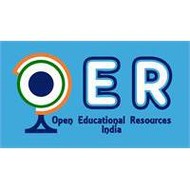(View Complete Item Description)
A guide to free and open source education.
Nearly every week, if not every day, there are more and more open source and open educational resources available and accessible to us. It's impossible to ignore. It also seems impossible to keep pace with the sheer volume.
Despite this, I will attempt here to give a comprehensive listing of many helpful, accessible, amazing open education resources. (There will inevitably be some left out, but here goes!)
To begin, it's good to understand that there are open resources for almost every age, grade, and subject:
elementary, middle, and high school students
higher, tertiary, and vocational education
special needs and gifted students
public or private school students
homeschoolers or unschoolers
parents, teachers, and administrators
Where open education is being used
Prime Minister David Cameron announced in February 2013 that more UK universities are joining Futurelearn, the UK's first provider of free, open online courses (with the British Library). In both the UK and US, there are hundreds or thousands of free, open online courses being used; increasingly we are seeing other countries, like Brazil and India, start to become heavy users and hotbeds for open source and open educational resources too.
Unesco has advocated for the use of open source and open educational resources worldwide. And, in December 2012 a UN trade group said that governments should seize open source opportunities and become less reliant on large-scale software manufacturers.
Why open source?
All educators and administrators, and hey, students too, should read and pass along this short note on Why should open source software be used in schools? Information like this helps begin the process of understanding, gets people on board, and can make the difference between action and talking.
Open education resources
OSS Watch provides tips for selecting open source, or for procuring free or open software.
SchoolForge and SourceForge are good places to find, create, and publish open software. SourceForge, for one, has millions of downloads each day.
Open Source Education Foundation and Open Source Initiative, and other organization like these, help disseminate knowledge.
Creative Commons has a number of open projects from Khan Academy to Curriki where teachers and parents can find educational materials for children or learn about Creative Commons licenses. Also, they recently launched the School of Open that offers courses on the meaning, application, and impact of "openness."
Numerous open or open educational resource databases and search engines exist. Some examples include:
OEDb: over 10,000 free courses from universities as well as reviews of colleges and rankings of college degree programs
Open Tapestry: over 100,000 open licensed online learning resources for an academic and general audience
OER Commons: over 40,000 open educational resources from elementary school through to higher education; many of the elementary, middle, and high school resources are aligned to the Common Core State Standards
Open Content: a blog, definition, and game of open source as well as a friendly search engine for open educational resources from MIT, Stanford, and other universities with subject and description listings
Academic Earth: over 1,500 video lectures from MIT, Stanford, Berkeley, Harvard, Princeton, and Yale
JISC: Joint Information Systems Committee works on behalf of UK higher education and is involved in many open resources and open projects including digitizing British newspapers from 1620-1900!
Other sources for open education resources
Universities
The University of Cambridge's guide on Open Educational Resources for Teacher Education (ORBIT)
OpenLearn from Open University in the UK
Global
Unesco's searchable open database is a portal to worldwide courses and research initiatives
African Virtual University (http://oer.avu.org/) has numerous modules on subjects in English, French, and Portuguese
https://code.google.com/p/course-builder/ is Google's open source software that is designed to let anyone create online education courses
Global Voices (http://globalvoicesonline.org/) is an international community of bloggers who report on blogs and citizen media from around the world, including on open source and open educational resources
Individuals (which include OERs)
Librarian Chick: everything from books to quizzes and videos here, includes directories on open source and open educational resources
K-12 Tech Tools: OERs, from art to special education
Web 2.0: Cool Tools for Schools: audio and video tools
Web 2.0 Guru: animation and various collections of free open source software
Livebinders: search, create, or organize digital information binders by age, grade, or subject (why re-invent the wheel?)
Legal help
New Media Rights is trying to help digital creators use public domain or open materials legally. They have guides on how to use free and open software materials in various fields.
Free, non-profit resources
WatchKnowLearn and Good Sites for Kids are examples of non-profit organizations that operate in an open way, but are technically not open source. Keep an eye out for them as well to help you along the open education way.
Material Type:
Assessment
Author:
RAKAVI




















